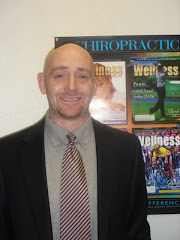Blame sun and smoking for early wrinkles. What will erase these marks of time?
Every woman dreads the day when she glimpses the first wrinkle in her otherwise smooth skin. But for many, that day is arriving even earlier than they expected. Dermatologists say that the increasing popularity of tanning beds and smoking among young women over the last two decades has spawned a generation with premature wrinkles or worse. "We're seeing many more women with sun damage at earlier ages today," says Dr. Roy Geronemus, a New York dermatologist. And, he adds, "the number of young women with skin cancer is startling."
Sun and cigarettes in adolescence and early adulthood are also the culprits behind age spots, broken blood vessels and irregular pigmentation by the time you're in your 30s. Dodging those two is the best way to keep skin looking young as long as possible. But if the damage is done, don't lose hope. Going under the knife isn't the only option. Even though you can't completely erase the effects of aging and unhealthy habits, you can take advantage of a growing array of skin-care products that may help hide these flaws-from $20 drugstore wrinkle remedies to laser procedures that can cost hundreds of dollars.
Here's a rundown of advice from the experts:
• SUNBLOCK: It seems obvious, but dermatologists say many people still wrongly assume that sun protection is required only for a day at the pool or beach. In fact, you need it every day. "When you're walking your dog, or even sitting next to a window for a long time, you're getting incidental sun exposure-and over time, that adds up to sun damage," says Dr. Diane Berson, assistant professor of dermatology at Cornell University's medical school. Pay attention to the sun-protection factor (SPF). While lotion with an SPF of 15 blocks about 96 percent of the sun's rays, a 45 SPF sunblock cuts out about 99 percent. That can make a big difference to someone who's fair-skinned. Wonder what your skin would look like if you'd kept it protected from the sun? "Look at your butt," says Dr. Steven Cohen, chief of the dermatology department at Montefiore Medical Center in New York. "It's smooth, without wrinkles."
• SUNBLOCK: It seems obvious, but dermatologists say many people still wrongly assume that sun protection is required only for a day at the pool or beach. In fact, you need it every day. "When you're walking your dog, or even sitting next to a window for a long time, you're getting incidental sun exposure-and over time, that adds up to sun damage," says Dr. Diane Berson, assistant professor of dermatology at Cornell University's medical school. Pay attention to the sun-protection factor (SPF). While lotion with an SPF of 15 blocks about 96 percent of the sun's rays, a 45 SPF sunblock cuts out about 99 percent. That can make a big difference to someone who's fair-skinned. Wonder what your skin would look like if you'd kept it protected from the sun? "Look at your butt," says Dr. Steven Cohen, chief of the dermatology department at Montefiore Medical Center in New York. "It's smooth, without wrinkles."
• MOISTURIZERS: Besides causing wrinkles and other damage, aging and sun exposure can exacerbate dry skin. Experts recommend regular use of a moisturizer once a woman is in her late 20s or 30s to smooth and soften skin. Look for ingredients like petrolatum, glycerin, hyaluronic acid and cyclomethicone-all of which help prevent water loss from your skin. Cohen prefers Vaseline Petroleum Jelly Cream, a nongreasy formulation. He recommends avoiding hot or frequent showers (which can remove the body's natural oils) and disinfectant soaps, which can be abrasive.
• WRINKLE ERASERS: Antioxidants like topical vitamin C or E neutralize free radicals (unstable oxygen molecules that break down skin cells, damage DNA and exacerbate wrinkles) and can improve the skin's appearance and protect it from sun damage. Retinoids (vitamin A derivatives) help remove dead cells for smoother skin, stimulate collagen production to ease wrinkles, and even out skin tone. Renova and Avage, available by prescription, are the only such products approved by the Food and Drug Administration to treat wrinkles. But brands with similar but milder ingredients like retinol are available over the counter. These include Neutrogena Healthy Skin Anti-Wrinkle Cream, RoC Retinol Correxion creams and L'Oreal Line Eraser.
• SPOT REMOVERS: To specifically target "sun spots" and even out skin color, dermatologists recommend products with hydroquinone, which gradually bleaches the skin. Side effects include redness and irritation. Avoid these products if you're pregnant because they can hurt a developing fetus.
Citation:
• WRINKLE ERASERS: Antioxidants like topical vitamin C or E neutralize free radicals (unstable oxygen molecules that break down skin cells, damage DNA and exacerbate wrinkles) and can improve the skin's appearance and protect it from sun damage. Retinoids (vitamin A derivatives) help remove dead cells for smoother skin, stimulate collagen production to ease wrinkles, and even out skin tone. Renova and Avage, available by prescription, are the only such products approved by the Food and Drug Administration to treat wrinkles. But brands with similar but milder ingredients like retinol are available over the counter. These include Neutrogena Healthy Skin Anti-Wrinkle Cream, RoC Retinol Correxion creams and L'Oreal Line Eraser.
• SPOT REMOVERS: To specifically target "sun spots" and even out skin color, dermatologists recommend products with hydroquinone, which gradually bleaches the skin. Side effects include redness and irritation. Avoid these products if you're pregnant because they can hurt a developing fetus.
Citation:
Barrett, Jennifer. "New Secrets for Youthful Skin." Newsweek Vol. CXLVII, No. 18. 24 Apr 2006: 74+. SIRS Researcher. Web. 14 Nov 2010.



